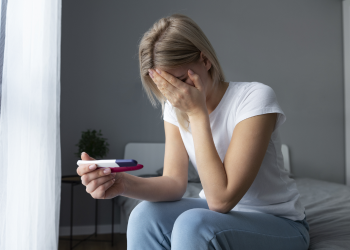Menstrual Disorder

Menstrual periods typically last four to seven days and occur roughly every 28 days. Normal menstrual cycles can range from 21 days to 35 days.
IRREGULAR PERIODS
- Periods that
occur fewer than 21 days or more than 35 days apart.
- Missing
three or more periods in a row.
- Menstrual
flow that’s much heavier or lighter than usual.
- Periods that
last longer than seven days.
- The length
of time between cycles varies by more than nine days. For example, one cycle is
28 days, the next is 37 days and the next is 29 days.
- Periods that
are accompanied by severe pain, cramping, nausea, or vomiting.
- Bleeding or
spotting that happens between periods, after menopause, or
after sexual intercourse.
- Soaking
through one or more tampons or sanitary pads in an hour.
Amenorrhea: A
condition where your periods have stopped completely If you haven’t started
menstruating by age 15 or 16 or within three years of your breasts developing,
you may also have amenorrhea.
Oligomenorrhea: A
condition in which the bleeding may go more than 35 days between periods or
have six to eight periods a year.
Dysmenorrhea: Painful
periods and severe menstrual cramps. Some discomfort during your cycle is
normal.
Abnormal uterine bleeding:
Abnormal uterine bleeding is bleeding between monthly periods, prolonged
bleeding, or an extremely heavy period.
CAUSES
- Endometriosis
- Pelvic
Inflammatory Disease
- Polycystic
ovarian disease
- Primary ovarian insufficiency
- Thyroid or
pituitary gland disorders: Hypothyroidism, hyperthyroidism, and
other thyroid or pituitary gland disorders
- Bleeding disorders
- Uterine cancer or ovarian cancer
- Stress.
- Gaining or
losing a significant amount of weight.
- Exercise
routines that result in very low body fat.
- Viruses or
other illnesses.
- Certain
medications
- complications
of pregnancy or breastfeeding
- Birth control pills
- Miscarriage or
an ectopic pregnancy
- Surgery
- Scarring or
blockages in your uterus, ovaries or fallopian tubes.
DIAGNOSIS AND TESTS
If you sense
changes in your menstrual cycle, begin keeping records of when your periods
begin and end. Note symptoms, the amount of flow, or if you experience cramping,
bleeding between periods, or passing large clots
- Pelvic ultrasound
- Endometrial biopsy.
- Hysteroscopy
MANAGEMENT
- The
treatment for irregular periods depends on the underlying cause
- Try to
maintain a healthy lifestyle by exercising moderately and eating nutritious
foods. If you want to lose weight, do it gradually instead of turning to diets
that drastically limit your calorie and food intake.
- Make sure
you get enough rest.
- Practice
stress reduction and relaxation techniques.
- Cut back on
prolonged or intense exercise routines.
- Change your
tampons or sanitary pads every four to six hours to prevent infections.





